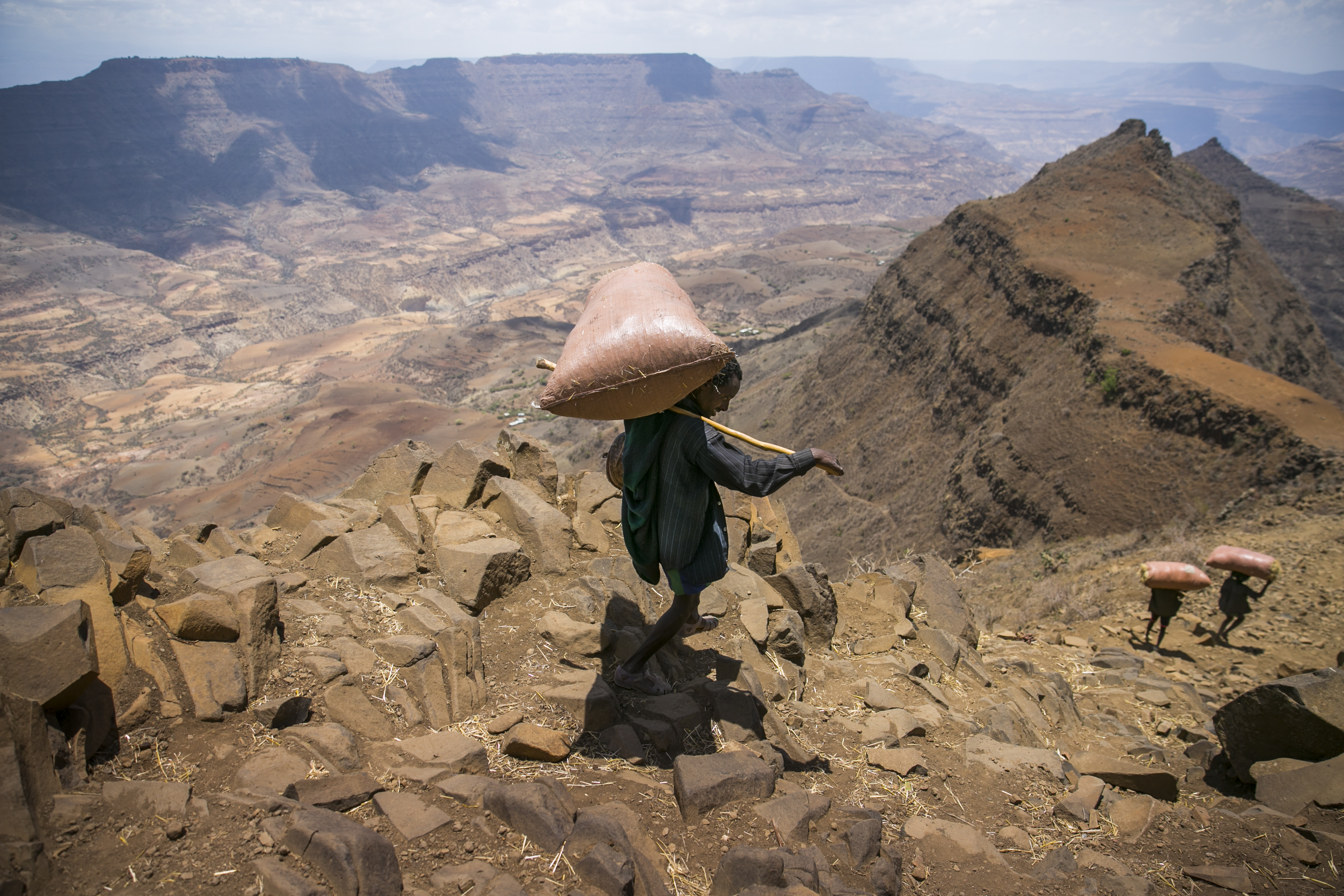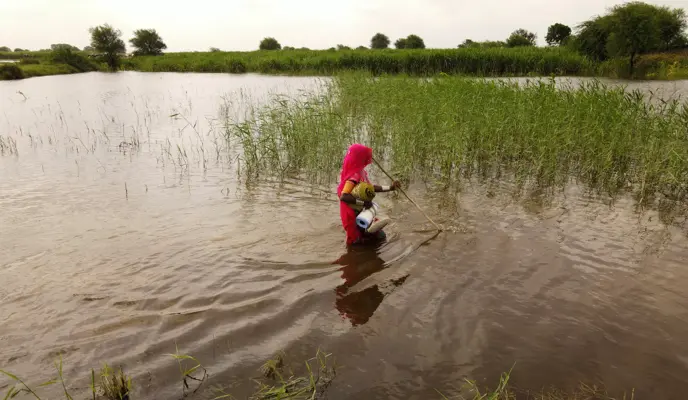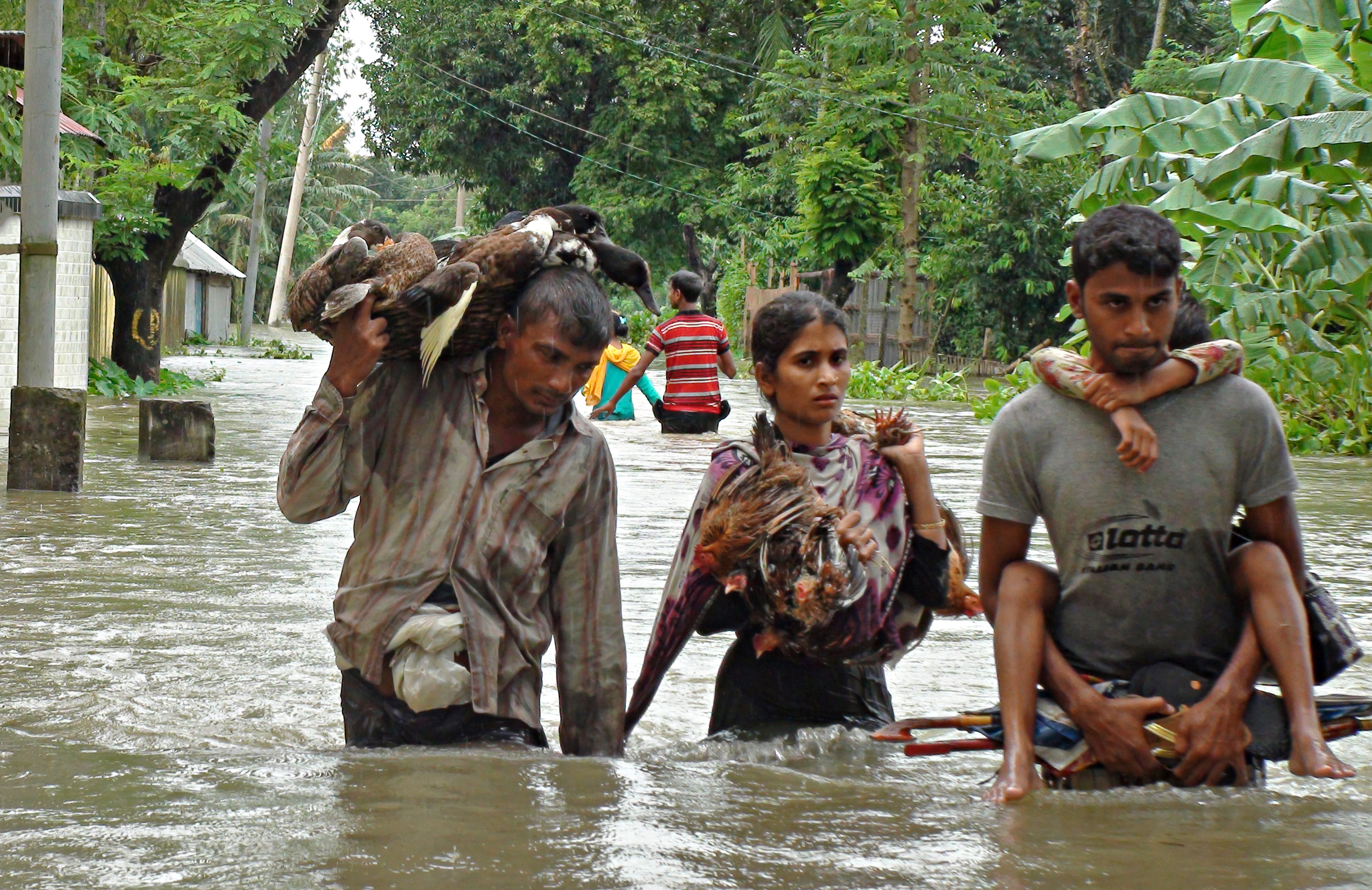News
Climate justice, explained
One of the solutions to the climate crisis requires high-income countries to take responsibility for their carbon footprints and support low-income countries bearing the brunt of those footprints.
Read MoreYou don’t need a Master’s in Environmental Science to understand the current climate crisis, but it helps to have a few definitions in your back pocket. Here are the terms you need to know for our changing weather conditions.
Climate change is here to stay and will accelerate. The threat of global warming is an existential one for humankind. It cannot be ignored and we need to act right now, with a sense of urgency. At Concern, we know that the climate crisis constitutes the most serious global environmental threat and is a significant cause of poverty: It increases the frequency of natural disasters, is a major driver of migration and displacement, factors into many conflicts, and disproportionately affects women.
Here are some of the words we use most frequently in talking about our work, and some of the most common climate change terms that are used everywhere from the New York Times to Twitter. You don’t need to memorize them all, but feel free to bookmark this page as a resource for when you need it.
Adjusting to the current climate and its effects, as well as the expected shifts in climate and those effects. We can’t undo the effects of climate change at this point, and so Concern’s climate change response focuses on adaptation. We do this in order to reduce the risks and harm associated with climate events, especially within families and communities with fewest resources. When possible, we also look for nature-based solutions.
The amount of carbon released into the air, measured by the parts per million within the atmosphere. On its own, carbon is an essential element to all life on earth. However, carbon dioxide (CO2) is a Greenhouse gas (see below), which means that it traps heat in the earth’s atmosphere. Some of this is emitted naturally, but much of the current carbon emissions are man-made (from fossil fuels, for example).
Broadly, climate is the long-term patterns of weather in an area over time, usually 30 years — a date defined by the World Meteorological Organization. More narrowly, however, we define climate as the average weather qualities over a period of time (which can be 30 years, 30 days, or 30 million years).
A shift in the state of weather patterns that can be identified and measured over an extended period — decades or longer. There are many causes of climate change — including some that are natural. But when we talk about climate change, we normally are talking about the changes that are attributed directly and indirectly to human activity that alter the composition of the global atmosphere.
A significant departure from the “normal” weather or climate in a given area. Both extreme weather and extreme climate events are referred to as “climate extremes” (see also: Extreme weather, below, for more).
A system of equity that links human rights and development to the issues of climate change, specifically that those who have done least to cause climate change are the ones suffering most from its effects.
We can make an educated guess as to what the climate will be like in the case of future emissions or changes in current habits. This is why the Paris Climate Agreement is important (not to mention possible!). Climate projections are made based on emissions, concentration, and radiative forces.
Climate Smart Agriculture (CSA) is a set of farming methods designed to increase the resilience and productivity of land affected by climate change.
A global system consisting of five major components and how they interact:
The climate system changes over time due to its own dynamics, as well as due to external forces both natural (e.g., a volcanic eruption) and man-made.
Following the United Nations Office for Disaster Risk Reduction’s definition, a disaster is a serious disruption in how a community or society functions — at any scale — due to hazardous events interacting with exposure, vulnerability, or capacity. A disaster’s impacts will include one or more of the following losses:
Disaster risk reduction (DRR) protects the lives and livelihoods of communities and individuals who are most vulnerable to disasters or emergencies. Whether the crisis is caused by nature or humans (or a combination of both), DRR limits its negative impact on those who stand to lose the most.
A period of abnormally dry weather that lasts long enough to cause serious water shortages. Drought is relative to an area and season’s average rainfall.

A set of actions used to forecast, predict, and communicate timely, reliable, and relevant warning information to communities. Depending on the context, an EWS may use scientific and/or indigenous knowledge to make as accurate predictions as possible, allowing people to reduce the possibility of harm or loss in the event of a natural disaster.
El Niño was initially used to describe a warm-water current that periodically flows along the coast of Ecuador and Peru, disrupting the local fishery. It has since become identified with warming of the tropical Pacific Ocean east of the dateline.
An event relating to weather or climate patterns that is rare at a particular place and time of year. By definition, these conditions vary from place to place. When a pattern of extreme weather persists for some time, such as a season, it may be classified as an extreme climate event — especially if it yields an average or total that is itself extreme (e.g., high temperature, drought, or total rainfall over a season).
Overflowing of normal confines of a body of water, or the accumulation of water over areas that are not normally submerged. Types of floods include:

An increase in the global mean surface temperature (GMST) averaged over a 30-year period, or within a 30-year period as compared to pre-industrial levels.
Gases that trap heat from the sun passing through the atmosphere. The light passes through, but the gases retain the heat within the atmosphere. There are some natural greenhouse gases (like water vapor and carbon dioxide), but over time humans have added more to the atmosphere, creating a heat trap that has led to the climate crisis.
A period of abnormally hot weather. Heat waves can be considered a climate extreme or extreme weather event.
The cycle in which water:

Actions that may lead to an increased risk of climate-related impacts, either now or in the future, including increased vulnerability, greenhouse gas emissions, or diminished welfare.
Another greenhouse gas, usually caused by burning wood, landfill decomposition, and livestock. Mitigation: A human intervention to reduce greenhouse gas emissions (the flip side of the coin of Adaptation).
Seasonal changes in the direction of a region’s strongest winds, especially around the Indian Ocean, blowing from cold to warm regions. These are often associated with rains and flooding as they cause wet seasons, but monsoons can also be associated with dry seasons.

In 2015, the Paris Climate Agreement was an accord adopted by nearly every nation around the world (signed by 195 countries and the European Union). It marked the first truly global treaty to fight climate change, control greenhouse gas emissions, and curb the global temperature. Its mission: Keep global warming down to under 2°C above pre-industrial levels, and aim to limit the temperature increase to a maximum of 1.5°C. Learn more about the Paris Climate Agreement and why it matters to humanitarian work.
The potential for adverse consequences for communities and ecological systems. Risk can, in terms of climate change, arise from potential impacts of the climate crisis, as well as human response to climate change.
An extreme climate event that results in the increase in the height of the sea level due to extreme weather conditions such as low atmospheric pressure or strong winds.
The critical threshold at which global or regional climate changes from one stable state to another, and does not return to the initial state or norm even if the causes of climate change are reduced or changed.
A strong, cyclonic-scale disturbance that originates over tropical oceans.